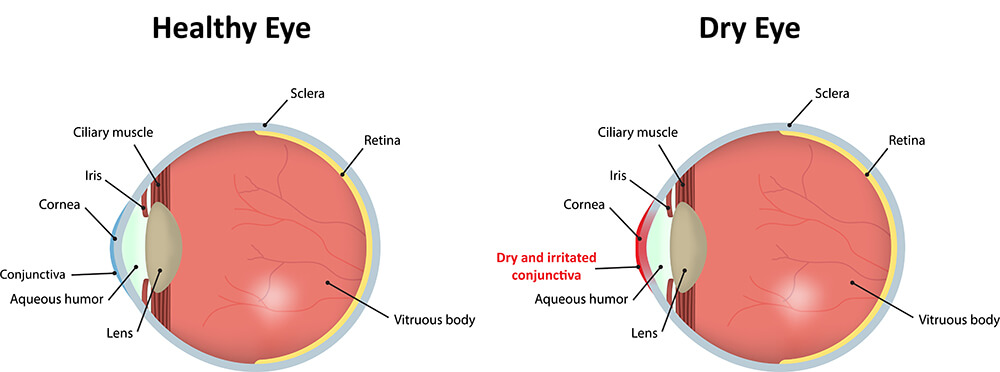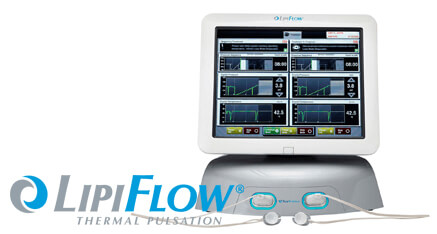
According to the (AAO), dry eye syndrome is a condition that affects as many as 12 million people in the United States. Many eye doctors have even been quick to refer to this as a modern day health care epidemic.
Many people will tell you that they have no problem producing tears during a sad movie or when the get upset over a tragic event. A large percentage of our population are unable to create tears when they are not crying. These people that cannot produce tears suffer from a chronic condition called dry eye syndrome. If you have this problem or feel like there is an irritating thing in your eye you may suffer from dry eye syndrome. Up to 12 million Americans suffer from a disease called dry eye syndrome. People with dry eyes frequently experience burning and stinging of their eyes, their eyes often feel sticky, and their eyes are often red. Interestingly, some people with dry eyes actually have periods when their eyes get so watery that tears spill over their eyelids and run down their cheeks.

Normal, healthy eyes, are continuously covered by a thin tear film. This film allows people to be able to see more clearly. Your eyes normally make small amounts of tears all day long. Tears play several important roles in keeping your eyes healthy and your vision clear. Tears lubricate the eye’s surface, wash away debris, and provide a smooth surface to help keep your vision clear. They also contain natural antibiotics that keep your eyes safe from germs that might cause infections.
The eyelid glands called Meibomian glands create the lipid (oil) layer of the tear film.
Evaporative Dry Eye disease is most often caused by a blockage or obstruction in the eyelid glands, which can lead to a lipid deficiency in the tears.
Treatment of dry eyes aims to restore a more normal tear film to minimize your dryness, blurred vision and irritations. Persistent irritations to one or both of your eyes might be a cause of dry eye(s). A decreased tolerance to contact lenses is a common symptom as well. Symptoms do vary from patient to patient when it comes to dry eyes. Most patients say they suffer from the feeling that there is something in there eye that is unobtainable to get out. If you have any of the following symptoms listed, you may be suffering from dry eye.
BatraVision is TearLab Center of Excellence
An objective and quantitative point-of-care diagnostic test that provides precise and predictive information.
The TearLab Osmolarity System* is intended to measure the osmolarity of human tears to aid in the diagnosis of dry eye disease in patients suspected of having dry eye disease, in conjunction with other methods of clinical evaluation.
The use of artificial teardrops is a common treatment for dry eye but not always effective. Many over the counter eye drops are not worth anything but may give some temporary relief. No one drop works for everyone, so you might have to experiment to find the drop that works for you. If you have chronic dry eye, it is important to use the drops even when your eyes feel fine, to keep them lubricated.
The dry eye specialists at our practice may also suggest punctal plugs for you. The term puncta refers to the opening of the tear ducts on the eyelid margin. The name may sounds strange but these tiny devices can do wonders for your dry eyes. The use of these plugs is typically useful in moderate to severe cases and often used in a specific eye that is not responsive to eye drops. These are actually little plugs placed in the corners of the eyes to reduce tear drainage. Tears will typically drain into your nose, but these plugs are inserted near the tear ducts to block the outflow.

The new LipiFlow treatment addresses the root cause of evaporative dry eye by unblocking the meibomian glands that secrete oily lipids.
In controlled clinical studies of patients who received a single LipiFlow treatment, the average meibomian gland score at 4 weeks increased by two to three times over the baseline condition, which reflects improvement in the number of glands secreting and secretion quality. Additionally, at four weeks after the LipiFlow treatment, 79% of patients reported improvement in dry eye symptoms.
Bay area Patients with moderate to severe dry eye could have persistent damage to the corneal surface. If you are one of these patients you could likely benefit from treatment with a Prokera Amniotic Membrane. Donated amniotic tissue is held in place over the cornea with a small ring for several days. This tissue promotes corneal healing and can keep even severely dry eyes comfortable for months after removal.